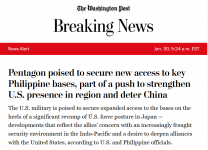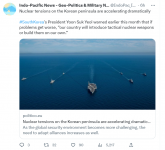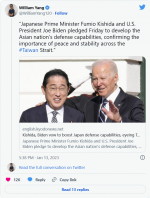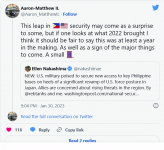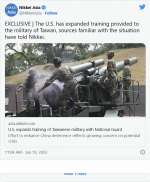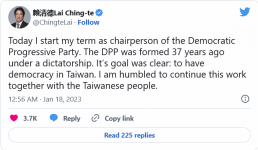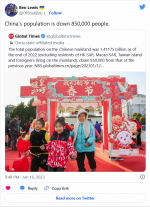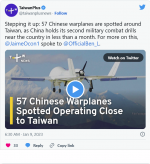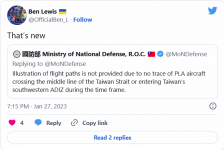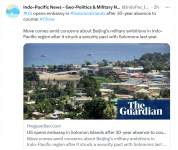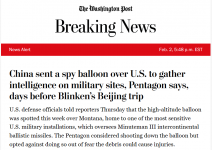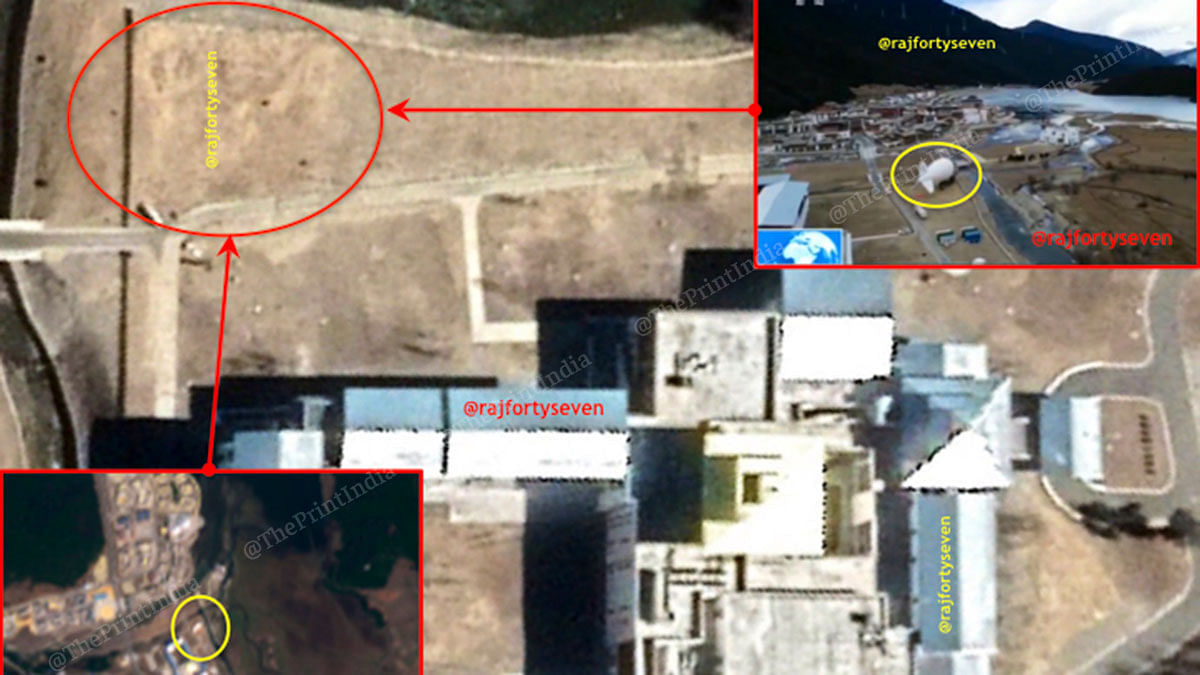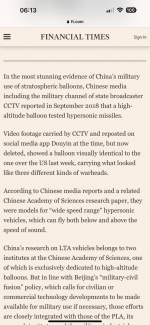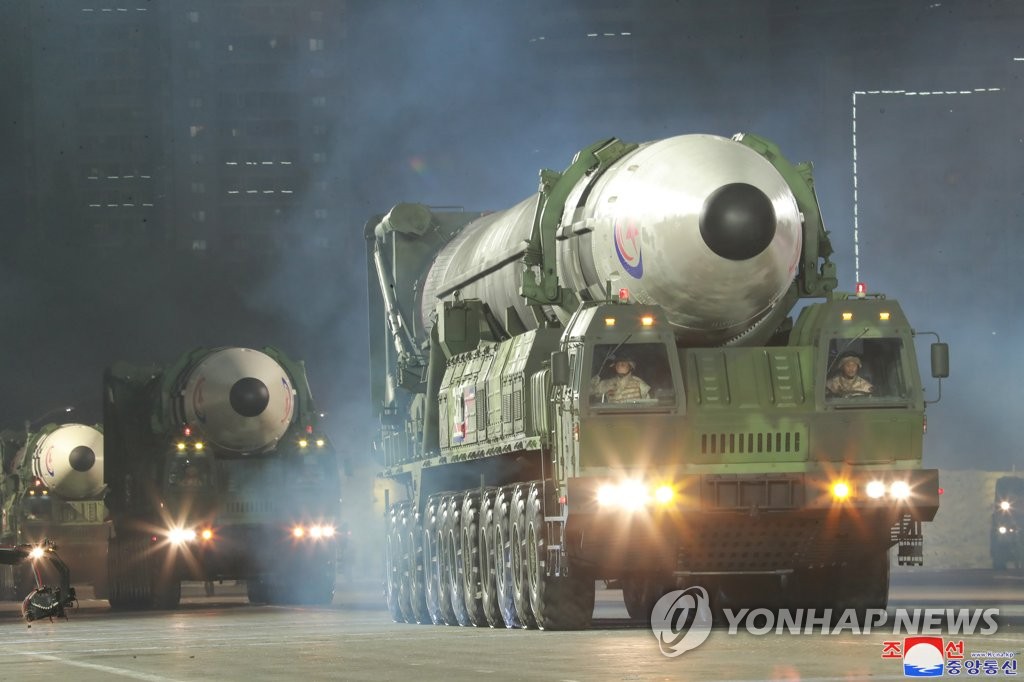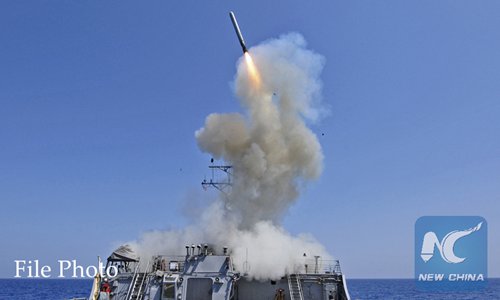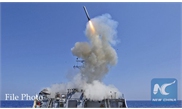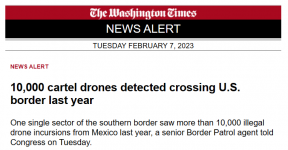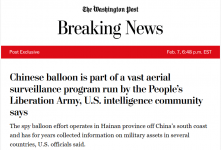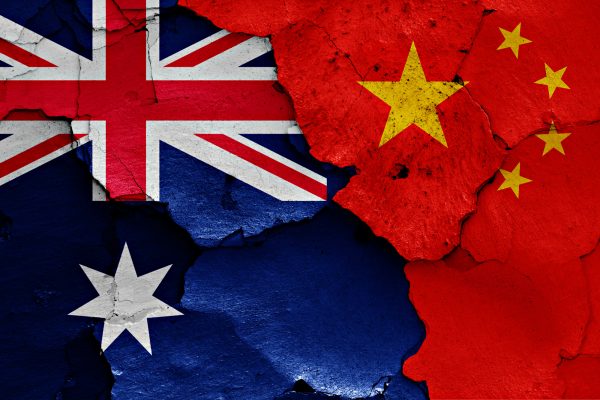America’s China Policy Is Not Working
By Henry M. Paulson, Jr.January 26, 2023
For all the talk of how we have entered a new global era, the last year bears a striking resemblance to 2008. That year, Russia invaded its neighbor, Georgia. Tensions with Iran and North Korea were perennially high. And the world faced severe global economic challenges.
One notable difference, however, is the state of Chinese-U.S. relations. At that time, self-interested cooperation was possible even amid political and ideological differences, clashing security interests, and divergent views about the global economy, including China’s currency valuation and its industrial subsidies. As Treasury secretary, I worked with Chinese leaders during the 2008 financial crisis to forestall contagion, mitigate the worst effects of the crisis, and restore macroeconomic stability.
Today, such cooperation is inconceivable. Unlike during the financial crisis, the
COVID-19 pandemic failed to spark Chinese-U.S. cooperation and only intensified deepening antagonism. China and the United States jab accusatory fingers at each other, blame each other for bad policies, and trade barbs about a global economic downturn from which both countries and the world have yet to recover.
Stay informed.
In-depth analysis delivered weekly.
The world has clearly changed.
China has very different and more assertive leadership. It has more than tripled the size of its economy since 2008 and now has stronger capabilities to pursue adversarial policies. At the same time, it has done far less to open its economy to foreign competition than many in the West have advocated and expected. Meanwhile, U.S. attitudes toward China have turned sharply negative, as have the politics in Washington. What has not changed, however, is the fact that without a stable relationship between the United States and China, where cooperation on shared interests is possible, the world will be a very dangerous and less prosperous place.
In 2023, unlike 2008, nearly every aspect of Chinese-U.S. relations is viewed by both sides through the prism of national security, even matters that were once regarded as positive, such as job-creating investments or co-innovation in breakthrough technologies. Beijing regards U.S. export controls aimed at protecting the
United States’ technologies as a threat to China’s future growth; Washington views anything that could advance China’s technological capability as enabling the rise of a strategic competitor and aiding Beijing’s aggressive military buildup.
China and the United States are in a headlong descent from a competitive but sometimes cooperative relationship to one that is confrontational in nearly every respect. As a result, the United States faces the prospect of putting its companies at a disadvantage relative to its allies, limiting its ability to commercialize innovations. It could lose market share in third countries. For those who fear the United States is losing the competitive race with China, U.S. actions threaten to ensure that fear is realized.
COALITION OF THE WILLING
The United States is attempting to organize a coalition of like-minded countries, especially the democracies of Asia and Europe, to counterbalance and pressure China. But this strategy is not working; it hurts the United States as well as China; and over the long term, is likely to hurt Americans more than Chinese people. It is also clearly in Washington’s interest to cooperate or work in complementary ways with China in certain areas and to maintain a beneficial economic relationship with the world’s second-largest economy.
Although many countries share Washington’s antipathy to China’s policies, practices, and conduct, no country is emulating Washington’s playbook for addressing these concerns. It is true that nearly every major U.S. partner is tightening up its
export controls on sensitive technologies, scrutinizing and often blocking Chinese investments, and calling out Beijing’s coercive economic policies and military pressure. But even Washington’s closest strategic partners are not prepared to confront, attempt to contain, or economically deintegrate China as broadly as the United States is.
In fact, many countries are doing the opposite of what the hardest-line voices in Washington seek. Instead of decoupling or deintegrating economically, many countries are instead deepening trade with China even as they hedge against potential Chinese pressure by diversifying business operations, building new supply chains in third countries, and reducing exposure in the most sensitive areas. Perhaps that is why, in 2020, despite years of American warnings, China overtook the United States as the European Union’s largest trading partner. Both EU exports to and imports from China grew in 2022. And Asian and European leaders, spurred by the November 2022 visit to Beijing by German Chancellor Olaf Scholz, now look set to beat a path to Chinese President
Xi Jinping’s door, with trips by Philippine President Ferdinand Marcos, Jr., French President Emmanuel Macron, and Italian Prime Minister Giorgia Meloni likely to drive a broader trend.
Washington risks pushing against economic gravity.
Washington’s “less of China” approach is faring even worse in the global South. Chinese-African trade reached a historic high in 2021, rising by 35 percent from 2020. An intensive U.S. campaign to push Chinese technology firms like Huawei out of backbone telecommunications architecture has fared comparatively well in Europe and India but poorly nearly everywhere else. Just take
Saudi Arabia. Its largest trading partner is China, and its Vision 2030 reform plan leans heavily on hoped-for collaboration with Chinese tech firms, including Alibaba and Huawei, even in the sensitive areas that are squarely in Washington’s crosshairs, such as artificial intelligence and cloud services. Indonesia, a huge Asian democracy that Washington has courted to counterbalance Chinese influence, has actually made Huawei its partner of choice for cybersecurity solutions, and even for government systems.
These U.S. efforts are likely to be even less successful now that China is reopening. Beijing is matching Washington’s “less of China” strategy with its own “more of everyone but America” strategy.
Beijing is reversing its restrictive COVID-19 policies, reopening its borders, courting foreign leaders, and seeking foreign capital and investment to reboot its economy. Last year, Xi made his first foreign trips since the outbreak of the pandemic to Central Asia and the Middle East, underlining his strategy to increase China’s global connectivity. With Xi now traveling the world again after a three-year hiatus, scattering renewed pledges of Chinese investment, infrastructure, and trade at every stop, it is Washington, not Beijing, that may soon find itself frustrated.
Trade rules are a good example. In 2017, U.S. President
Donald Trump withdrew from the Trans-Pacific Partnership (TPP), and six years later, Washington clearly has no intention of rejoining it. Yet Beijing has applied to join the pact, now called the Comprehensive and Progressive Agreement for Trans-Pacific Partnership (CPTPP). China has also ratified the Regional Comprehensive Economic Partnership in Asia, applied to join the Digital Economy Partnership Agreement, and upgraded or initiated new free trade agreements with countries from Ecuador to New Zealand. China is now the world’s largest trading nation. Nearly two-thirds of all countries trade more with China than with the United States.
Competition with China begins at home.
Meanwhile, the United States is pursuing a “worker-centric” trade policy that looks very much like protectionism. And Washington’s Indo-Pacific Economic Framework looks timid by comparison. The framework is struggling, not least because it denies new market access to the very countries that have joined the pacts that Washington has shunned.
Washington risks pushing against economic gravity. The United States has succeeded in controlling the most sensitive technologies, including advanced semiconductors. But it will have less success with a strategy premised on promoting broader technology deintegration with China because most countries are not following its lead and may, eventually, find ways to adjust.
These efforts to shut out China will certainly hurt China, but they hurt the United States, too. American businesses are put at a huge competitive disadvantage, and U.S. consumers pay the price. One sensible step to correct this problem would be to limit tariffs on imports of Chinese consumer goods, which make them more expensive for U.S. consumers. These are politically popular but economically nonsensical. They hurt China but hurt U.S. job creators, as well, including ordinary companies that depend on Chinese suppliers, have few workarounds, and have been crushed under the weight of inflation and high energy bills. But these should not be lifted without getting something in return. For example, Washington should push China to live up to the terms of the 2020 Phase One trade agreement, including by buying more U.S. agricultural products. China also should be required to open its markets to more U.S. goods.
TALK IT OUT
Ultimately, competition with China begins at home. The United States and China have very different political systems. The United States’ is superior, but it must be demonstrated through results. This means sticking to the principles that made the U.S. economy the envy of the world and underpin U.S. national security. It also means demonstrating economic leadership abroad.
It is critically important that Washington win the race to develop technologies and attract talent. Economic success will be driven to a large extent by technological superiority. This requires the United States not just to develop those technologies of the future but to commercialize them and not hoard them. It demands the United States set global standards rather than ceding the playing field to China. And the United States should be leading on trade, not withdrawing from the very pacts China has applied to join and cutting U.S. workers off from export opportunities.
To be sure, security tensions are baked into the relationship, and Xi’s China is a formidable competitor with which the United States must take a very tough-minded approach. Beijing is pursuing policies inimical to U.S. interests in many areas, and it is unlikely to adjust anytime soon. Washington needs to be tough-minded but fair, open to dialogue but not for its own sake, and prepared for a tough, long slog in pursuing self-interested coordination with China.
Such cooperation has been meaningful in the past. At the height of the financial crisis of 2008, China was a huge holder of corporate, banking, and Fannie Mae and Freddie Mac securities. The close coordination established with Chinese leaders during the Strategic Economic Dialogue helped Washington convince Beijing not to sell U.S. securities, which was critical to avoiding another Great Depression. The Chinese stimulus package that followed the first G-20 in 2008 also helped to counteract the effects of the crisis and assist the global economic recovery.
Xi’s China is a formidable competitor.
Financial crises are inevitable, and they will be much easier to manage in ways that limit the economic hardship in both countries and the world if the two largest economies and drivers of economic growth are able to communicate and coordinate to anticipate and forestall economic disruption, as well as to mitigate its impact. And it is in China and the United States’ shared interests to do just that. But this requires U.S. Treasury Secretary Janet Yellen and her colleagues to have a regular dialogue with their Chinese counterparts where they discuss and monitor global and domestic macroeconomic and financial risks.
A shock in the real economy can move quickly to the financial system, and financial excesses can wreak havoc on people’s lives if left unaddressed. Modern finance, where money can move around the world with the speed of light, makes the world seem like an increasingly small place. The Chinese economy is so large and integrated globally that disruptions there in 2015 and 2021 immediately rippled through global financial markets. And, of course, the primary and secondary economic and financial linkages between China and the United States are so broad and deep they cannot be wished away, which makes it particularly important that the two states share views on macroeconomic risks. China is the second-largest holder of U.S. Treasury bonds and a large investor in other U.S. securities, so it is in both countries’ interests for China to have an understanding of U.S. economic policy and confidence in U.S. policymakers, particularly when Congress is wrangling over the debt limit. The lack of transparency around China’s lending to some very troubled economies and the large amount of U.S. business investment in the Chinese economy, which can seem like a black box to outside analysts and where abrupt policy changes can take the market by surprise, mean it is critical to both states that U.S. policymakers have a better understanding of China’s economic policies and challenges.
The United States needs to solidify the floor that the Biden administration has tried to put under the freefall. This is essential because the allies and partners Washington hopes to enlist to pressure China expect a good-faith effort to seek cooperation with it, where possible. And that is one reason that U.S. President
Joe Biden, in his meeting with Xi in Indonesia last November, sought to establish guardrails around a deteriorating relationship.
To improve coordination, Chinese and U.S. decision-makers should meet more frequently and talk much more candidly. Friendship is no prerequisite for such coordination. And obvious political, security, and ideological tensions do not preclude self-interested cooperation on issues such as macroeconomic stability, pandemic preparedness, climate change, combating terrorism, nuclear nonproliferation, and firewalling the global financial system against future crisis and contagion. U.S. Secretary of State
Antony Blinken’s upcoming meeting with Chinese State Councilor Wang Yi is a good starting point. Yellen should be talking regularly to China’s new economic czar, He Lifeng. Federal Reserve Chair Jerome Powell should also be speaking with China’s top central banker.
Washington should negotiate aggressively with Beijing to win opportunities for Americans in its market.
And Beijing should not hold hostage cooperation on global issues such as
climate change because it is upset about unrelated issues. Linking different foreign policy issues undermines China’s effort to present itself as a constructive global problem solver.
The United States also needs to carefully distinguish what it must have from its allies from what is merely nice to have. Controlling weapons-related technologies and dual- and multiple-use technologies, and more intensively screening Chinese investments and mergers and acquisitions with global tech companies are a must. But Washington does not need to encourage deintegration in areas that are not central to national security or the competitiveness of the world’s democracies at the technological bleeding edge.
Some level of decoupling is inevitable. In the case of high technologies, some targeted decoupling will be absolutely necessary. But wholesale decoupling makes no sense. Americans benefit from access to the world, and China will remain a huge market that Americans can either partake in or abandon to competitors. China is the world’s second-largest economy, its largest manufacturer, and its largest trader. It will be a big part of the global financial picture for decades to come. Instead of fatalistically accepting the descent of an economic iron curtain, Washington should negotiate aggressively with China to win opportunities for Americans in its market. Administration officials should have serious discussions with Chinese leadership about how to manage the decoupling in a way that allows for mutually beneficial trade. Right now, the two countries are mostly trading charges and countercharges while doing nothing to expand mutually beneficial economic opportunities.
Chinese-U.S. security tensions cannot be wished away, and Americans are rightly concerned, especially after the brutal Russian invasion of
Ukraine, that Beijing will throw its weight around, not least by coercing Taiwan. Bolstering deterrence is a big part of the answer. So are improved relations with allies. But U.S. allies and partners have made no secret of their desire not to isolate or contain Beijing. That is one message Washington should take away from the world’s refusal to disengage with China—and from China’s effort to drive wedges between Washington and everyone else.
The political winds are strong and the desire to punish China even at the United States’ expense is driving many in Congress. Biden will need a lot of courage to be smart and bold in the face of these challenges.
The dangers of a broad decoupling.

www.foreignaffairs.com

asiatimes.com




